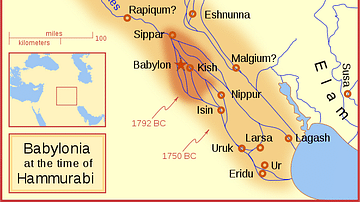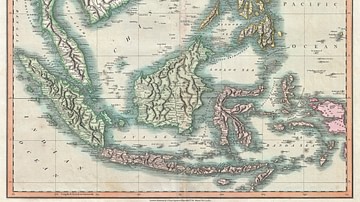Illustration
This map illustrates the political landscape of the Ancient Near East around c. 1700 BCE, during the Old Assyrian period and shortly before the rise of the Babylonian Empire under Hammurabi (reigned c. 1792–1750 BCE). It highlights key regional powers, shifting alliances, and the emergence of Assur as a significant force in Upper Mesopotamia.
At this time, the city-state of Assur, located on the Upper Tigris, was evolving from a commercial hub into a growing political and military power. Assyrian merchants established far-reaching trade colonies, including in Kanesh (modern Kültepe), anchoring a long-distance commercial network that shaped the region's economic dynamics. Meanwhile, in central Anatolia, a collection of local principalities began to unify under King Anitta of Kussara (reigned c. 1740 BCE)—the first ruler known to have used the title "Great King"—laying the foundations for the Early Hittite Empire. Elsewhere, older powers like Eshnunna and Mari (under Zimri-Lim, reigned c. 1775–1761 BCE) were in decline, while Babylon, under Hammurabi, was consolidating power that would soon transform the political order of southern Mesopotamia.
About the Author
Cite This Work
APA Style
Netchev, S. (2022, January 18). Map of the Old Assyrian Empire. World History Encyclopedia. Retrieved from https://www.worldhistory.org/image/15146/map-of-the-old-assyrian-empire/
Chicago Style
Netchev, Simeon. "Map of the Old Assyrian Empire." World History Encyclopedia. Last modified January 18, 2022. https://www.worldhistory.org/image/15146/map-of-the-old-assyrian-empire/.
MLA Style
Netchev, Simeon. "Map of the Old Assyrian Empire." World History Encyclopedia. World History Encyclopedia, 18 Jan 2022, https://www.worldhistory.org/image/15146/map-of-the-old-assyrian-empire/. Web. 25 Jun 2025.








